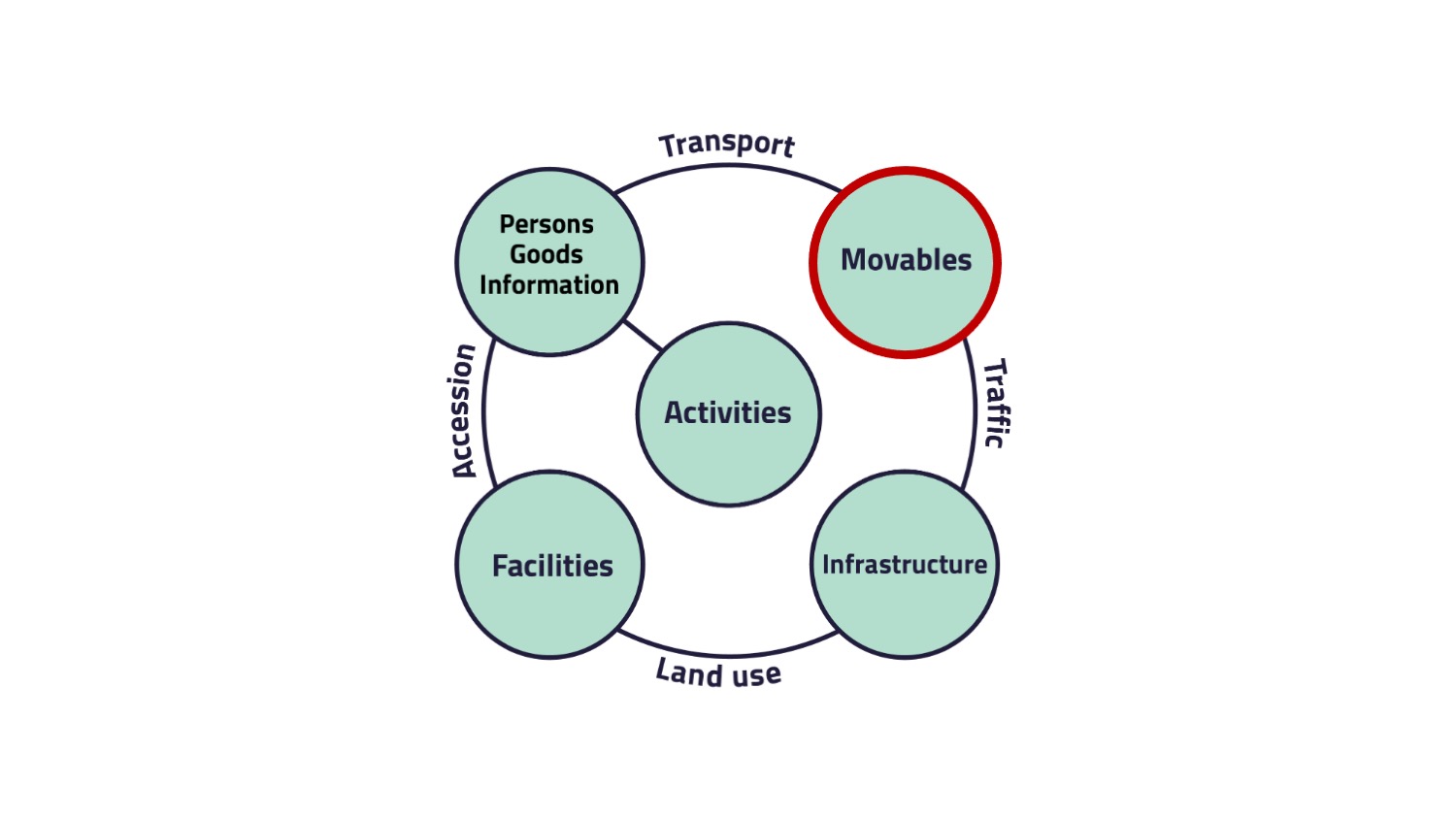Conceptual System Model of Transport and Traffic
In this section, you will learn more about the different elements and
relations of the conceptual system model of transport and traffic.
4. Movables
In order to further understand the conceptual system model, we will now deal with the third element „Movables“. In the upcoming topics, the different vehicle types for each means of transport will be explained there.

A vehicle/vessel is a tool designed to perform the movement on infrastructure for the purpose of carrying a load of persons and/or goods. It needs to have as a basic function a system to support and safely contain its load.
In addition, it has as minimum needs the following functions:
- A system that supports it relative to its infrastructure. If the supporting medium is the ground the tool is called a vehicle. It is called a vessel if it is mainly supported by air or water.
- A system for forward propulsion by muscle or machine power relative to the infrastructure.
- A system for steering, i.e. change direction.
- A system for braking.
Some examples for movables are:
- trucks / cars,
- trains,
- ships,
- airplanes,
- cargo bikes,
- drones,
- hand truck, etc.
The relation between vehicles/vessels and infrastructure is called traffic.
Traffic
Traffic is the interaction between vehicles/vessels and infrastructure and the movement of vehicles or vessels.
- These movements take place on infrastructure with movables. In other words: Excluding here pedestrians, who only use their legs (manual tools) traffic is an interaction between vehicles/vessels and infrastructure.
- Movements in traffic requires space, and since space is restricted, every traffic system has a maximum capacity.
- Traffic is where most of the resulting metabolism of the system (energy use to drive the system) takes place. Traffic is also the last in the chain of derived demands and therefore the most difficult to change. This must be remembered e.g. when carrying out environmental analysis and suggesting changes of traffic systems.
Traffic flow and capacity are measured in traffic units per hour that are passing a specific segment of infrastructure, such as an airport field or a road crossing (e.g. annual average daily traffic (AADT) in vehicles per day).
Traffic density is measured in the number of traffic units that at a specific point of time is enclosed within a traffic segment.
Traffic occupation is the percentage of available space within a specific segment that is used by vehicles/vessels at a specific point of time, such as the number of quay meters in a harbour used by ships at a certain hour.
Goods traffic Sub-Systems
The traffic can be divided into three different parts. For the goods traffic, the following figure shows the three kinds of goods traffic (land, air and water traffic) and the subcategories.
Literature
Bloech, J. (1997): Vahlens großes Logistiklexikon. München: Beck [a. o.]
Flämig, H.; Sjöstedt, L.; Hertel, C. (2002): Multimodal Transport: An Integrated Element for Last-Mile-Solutions? In: Conference Proceeding of the International Conference “Freight Transport Automation and Multimodality. Organisational and Technological Innovations,Delft, Niederlande